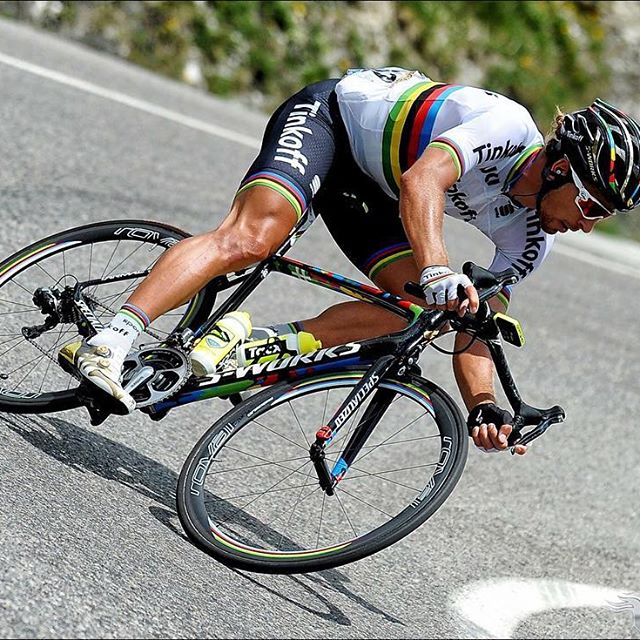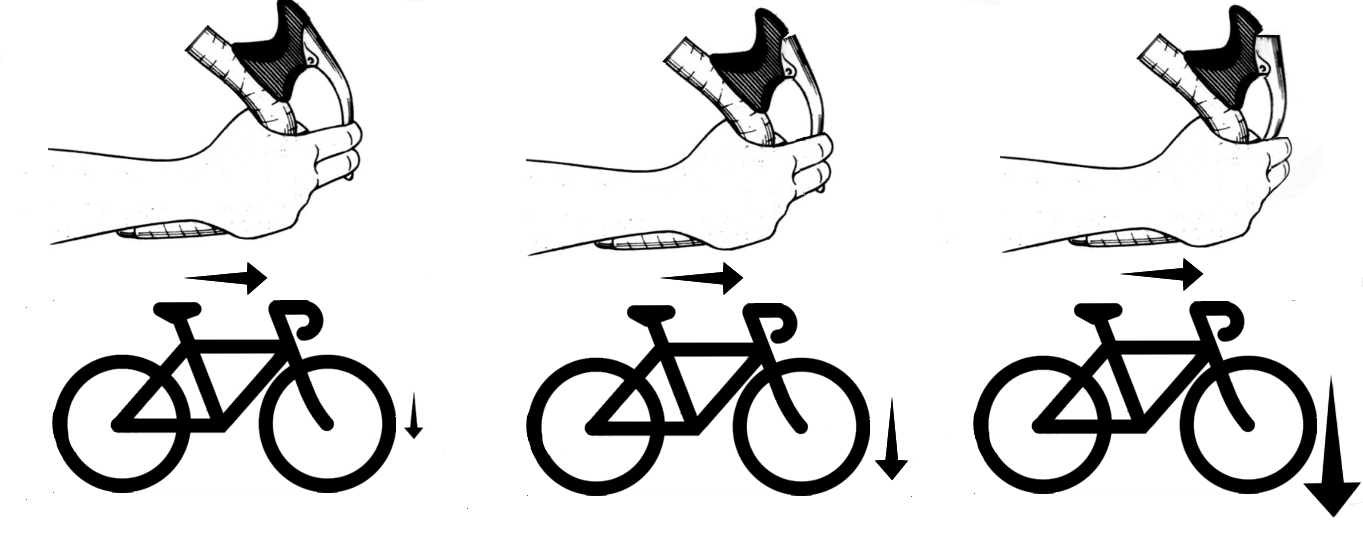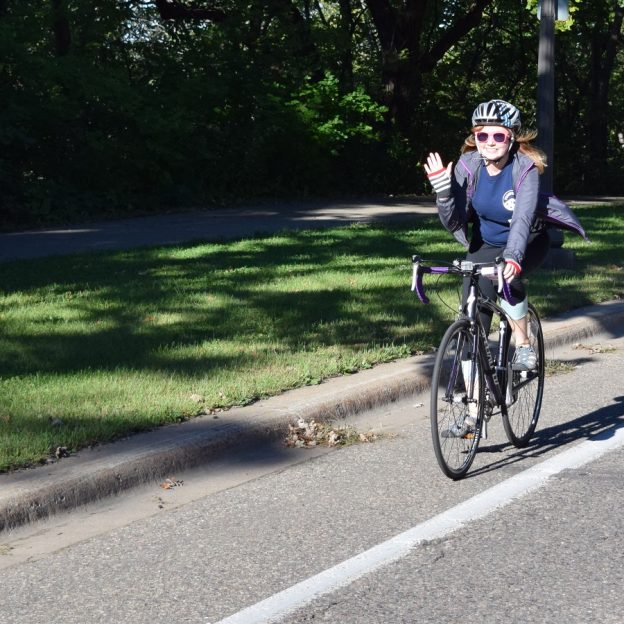What goes up must come down. Descending on your road bike can be fun and safe if you learn some basic skills.
Weight down
If you have ever watched a motorcycle race, you will have seen those riders get off the side of the bike and touch the ground during turns. The purpose of that position is to get their center of gravity as low as possible. I don’t recommend matching that position on your road bike, but we can take some lessons from them. First thing, the lower your weight, the more stable you will be. Try lowering one foot to the bottom of the pedal stroke while descending in a straight line. When turning, drop your outside foot to the bottom of the pedal stroke and lean your hips toward the inside of the turn.

Hands in drops
Most riders use their drops about 10% of the time. It should be a position you can be in comfortably, if not, be sure to have your fit checked. Being in the drops while descending does two very important things. First, it lowers your upper body weight. Second, it gives you a greater mechanical advantage on your brake levers. Be careful with this new found braking power. Get comfortable with the different brake feel on gradual grades before tackling steep roads with speed.
Brake power
As you descend you are putting more weight on your front tire than rear tire. Additionally, as you apply the brakes, even more weight gets distributed onto the front wheel. With your weight shifting forward, you will notice that a rear wheel is far more likely to skid and break free while going downhill than on flat ground. The best thing to do while braking downhill, is to use the front brake to stop and slow the bike and the rear brake to control speed. New riders get taught that the best way to stop is to use both brakes evenly and that if we use too much front brake we are prone to crash “over the bars”. While going “over the bars” is a real concern it can be combated with a little practice. Simply put, as you begin to stop, brace yourself with your arms and get your weight low.

Look ahead
The world comes at you fast when heading downhill. For this reason, focus farther down the road than you would on flat ground. Keep eyes peeled for cars, pedestrians, painted road surfaces, gravel, or anything else that you will want to avoid. Also, look for the best approach for upcoming turns. When preparing for a turn, be cognizant of the exit to the turn as well as the entry. By planning how to enter, navigate, and exit a turn safely and efficiently, you will stay in control.
Trust your tires
Tires are literally where the rubber hits the road. Even though your tires only make about 3 square inches of contact with the road, they can do a lot to keep you planted. You can do a simple test to build confidence in the traction your tires give you. Try to find a place where the road surface is banked and ride along it. Under highway overpasses often have banked concrete surfaces with a sidewalk separating them and the road. Ride along that bank slowly and see how well the tires hold. You will find that the tires continue to hold fast even when the pitch becomes very steep.
Warning signs and speed wobbles
There are some normal things you want to avoid while going downhill. The most concerning things like sand, gravel, leaves, or debris could rob you of traction. Beyond outside influences, speed wobbles are an uncommon but frightening situation that some cyclist encounter. Speed wobbles are exactly what they sound like. As you get up to a certain speed, your bike will begin to wobble. There are many causes for speed wobbles, but only two things you can do when you encounter them. You can go faster (not recommended) or slow down carefully. Slowing out of a speed wobble is a matter of riding straight, and slowing under control.
Ride within your abilities
More important than the skills to ride downhill is the mentality. Riding at speeds you are comfortable with will keep you mentally, and by extension, physically calm. Calm riders make better and safer decisions. Be sure to take unknown descents with caution and build up to speed after you try it a few times. Overall, remember that it becomes harder to control your bike at higher speeds, so take it slow to start.



Comments
One response to “Road Bike Hacks: Descending with Confidence and Skill on Your Road Bike”
very well written.